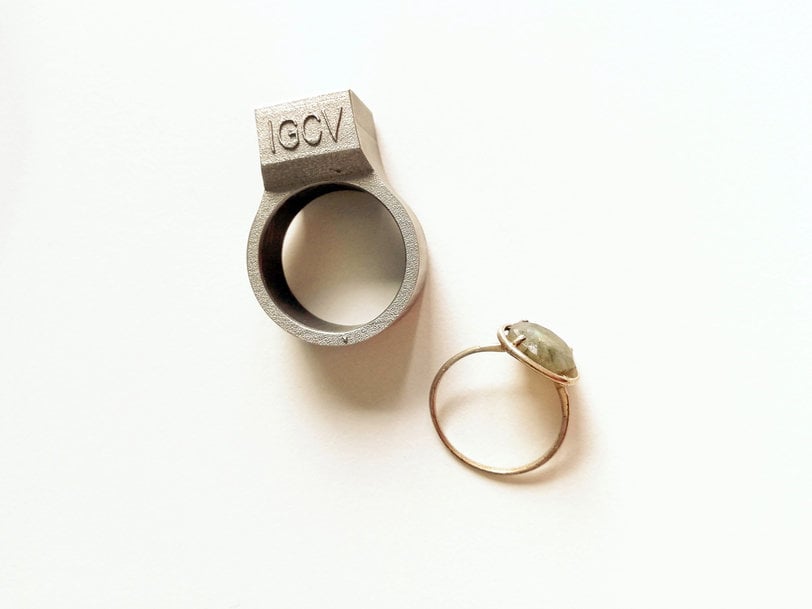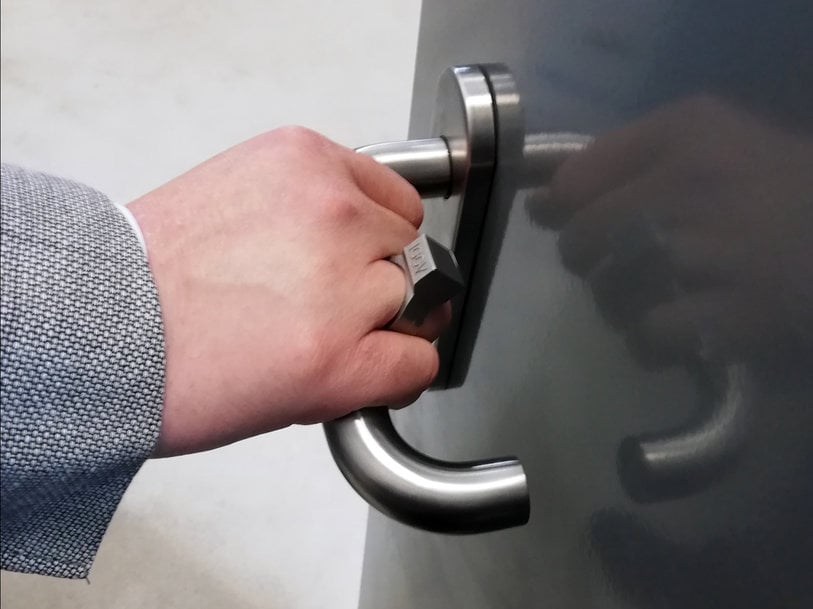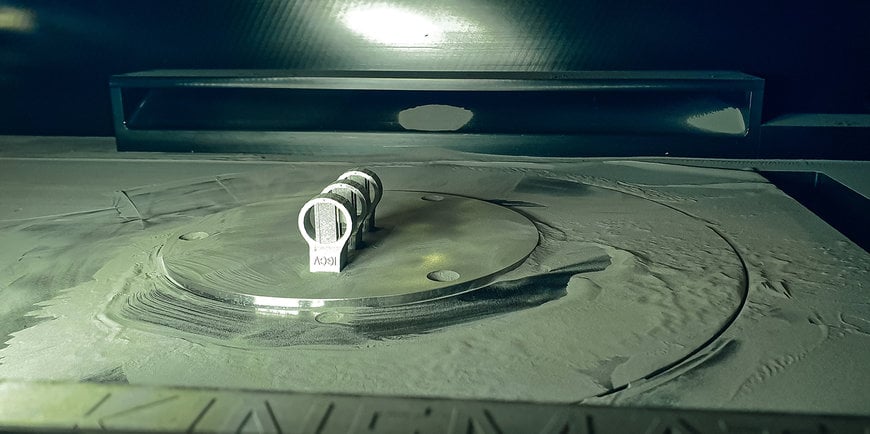electronics-journal.com
17
'21
Written on Modified on
Smart finger ring with integrated RFID chip
House key, wallet, health insurance card, hotel key card — a smart finger ring could replace all these in the future. Produced by a 3D printing process, the ring has an integrated RFID chip, tamper-proof, sealed and invisible.

The technology of integrating electronics during 3D printing can of course be used for other applications too. The multifunctional ring was developed by a research team at Fraunhofer Institute for Casting, Composite and Processing Technology IGCV.
Now, where’s my house key — could I have left it in the office? And when we want to pull out our wallet at the supermarket checkout, we often find that it’s somehow made way to the bottom of the shopping bag in all the hustle and bustle. A smart ring could soon put an end to such frantic searches: Concealed inside the ring is an RFID tag that is able to pay at the checkout, open the smart front door, act as our health insurance card when attending a medical appointment or replace the key card in a hotel. It might also be possible to save medical data such as our blood group or drug intolerances on this chip: In an accident, the emergency physician would have all the necessary information to hand. Researchers at Fraunhofer IGCV developed the intelligent ring as part of the MULTIMATERIAL Center Augsburg. The large-scale project, sponsored by the Bavarian Ministry of Economic Affairs, Regional Development and Energy, is divided into ten individual projects — including the KINEMATAM project, which came up with the idea and the demonstrator model of the smart part.

Thanks to the integrated RFID tag, the ring produced by the 3D printing process can act as a door opener.
3D printing with automated integration of electronics
More important than the ring itself, however, are the manufacturing process and the ability to integrate electronics while a component is being produced — even at places within the component that would otherwise be inaccessible. The inside of a ring, for example. We can refer to 3D printing in the broadest sense to describe a production process, but in technical jargon, it would be called “powder bed-based additive manufacturing”. The principle is this: A laser beam is guided over a bed of fine metal powder. At the point where the 80 micrometer laser spot hits the powder, the powder melts and then solidifies to form a composite material — the rest of the metal, which is not exposed, retains its powder form.
The ring is built up layer by layer, with a cavity left for the electronics. Midstream, the process is halted: A robot system automatically picks up an RFID component from a magazine and places it in the recess before the printing process continues. This precisely controllable production technology is opening the door to a host of possibilities for realizing completely individualized ring designs. And the chip is sealed by the ring, making it tamper-proof.
3D printing itself has been around for a long time. The main focal point of the development was the expansion of the laser beam melting unit by the internally developed automated process that places the electronics. “Converting the hardware technology to allow electronic components to be integrated during the manufacturing process is unique,” says Maximilian Binder, Senior Researcher and Group Manager in the Additive Manufacturing unit at Fraunhofer IGCV. The second focus of the development was to answer this question: How can the electromagnetic signals from the RFID chip be sent through metal? Metal, you see, is normally an effective shield against signals. The research team carried out numerous simulations and experiments — and found a suitable solution.
“We use a frequency of 125 kilohertz: This has a shorter range — which is exactly what we want here — and is less effectively shielded by the metal,” explains Binder. Plus, the tag is affixed in such a way that its signals have to penetrate just one millimeter of metal. The design of the cavity and the way the electronics are embedded into it are also instrumental in propagating the signal since the walls can reflect or absorb the signals. Another challenge was to protect the sensitive electronics of the RFID tags from the high temperatures, reaching over 1000 degrees Celsius, involved in the manufacturing process.

The smart ring in a bed of fine metal powder.
Numerous conceivable applications
The technology can be used wherever the conventional method of integrating the electronics proves difficult. The researchers are currently working, for example, on an application in the production technology sector: They are implementing sensors in gear wheels, the aim being for them to send, live during operation, information about the load state, temperatures at various positions, and other important parameters to an evaluation unit in a wireless fashion. Is initial damage already occurring on a tooth? The measured vibration will tell us.
The integrated sensors receive the energy they need via a printed RFID antenna on the outside — the sensors then work passively, meaning without a battery or other separate power supply. Consequently, the integrated sensors will, in the future, be able to realize a monitoring potential that would otherwise not have been possible due to the fast rotational speed of the gear wheels.
www.fraunhofer.de

